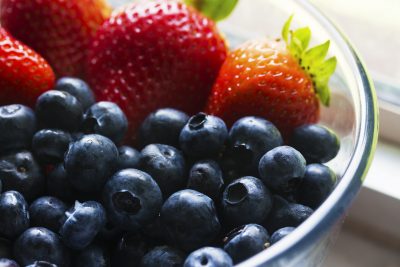The controversy surrounding the use of plastics is widespread and exceptionally polarizing. Numerous compounds found in plastic are thought to potentially cause adverse human and animal effects. Plastics are found everywhere in our environment. Learning which plastics to avoid may improve your health and quality of life.
By now, most people are aware that plastic containers are numbered. These numbers correspond to the type of plastic resin used to create the product or container. The plastics are numbered from 1-7. It appears this time that #7, #3 and #6 are the most potentially toxic, while #1, #2, #4, #5 seem to be somewhat safer.
Currently the Most Dangerous plastics with regard to human health include:
#3 PVC (Poly Vinyl Chloride)
PVC’s are found everywhere. PVC is the world’s third-most widely produced synthetic plastic 1. IV tubing, shrink wraps, sandwich bags, toys, lunch boxes, table clothes and blister packs are just a few of the products manufactured with PVC. PVC’s contain DEHP (di-2-ethylhexyl phthalate) a type of phthalate. Phthalates are plasticizers which make products more flexible. When phthalates are manufactured and incinerated, dioxin is released. According to the World Health Organization, International Agency for Research on Cancer, TCDD, a dioxin, is classified as a “known human carcinogen”.
Phthalates have been found to disrupt hormones in wildlife causing problems such as infertility, testicular cancer and genital malformations. The research on the effect of phthalates on human health is more limited. However, it appears that phthalates are associated with the development of childhood asthma and possible reproductive issues in males and females.
My Recommendation: AVOID, DEFINITELY DO NOT HEAT, DO NOT MICROWAVE
#6 – PS (Polystyrene)
Polystyrene is also called “Styrofoam”. It is found in many disposable containers such as, cups, bowls, take-out containers, egg cartons, coffee cups and is used in egg cartons, disposable plates, cups and bowls, take-out containers, coffee cups and meat trays.
Heated polystyrene releases a compound called styrene. According to the EPA.gov website, short term exposure to styrene can cause irritation in the linings of the mouth, nose and lungs as well and the GI tract. Headaches, weakness, hearing loss and nerve damage appear to be the result of more chronic long term exposure. In addition, several studies suggest an association between styrene and leukemia and lymphoma. As of yet, the EPA has not formally named styrene as a carcinogen.
My Recommendation: AVOID, Especially any hot foods and drinks in Styrofoam
#7 All “other” Plastics
All products that contain either a combination of plastics or any plastics not included in #1-#6. The issues with products made from plastics in category #7 is that you don’t know what type and the amount of toxins to which you are exposed.
Often times these plastic products contain BPA (Bisphenol-A) or BPS (Bisphenol-S) the chemical that replaces BPA. Research on Bisphenol-S is currently limited.
My Recommendation: AVOID, If using Do Not Heat
Currently plastics found in #1, #2, #4, and #5 seem to be slightly safer with less data to suggest human and animal toxicity.
#1 PET (polyethylene terephthalate)
This type of plastic is commonly found in water bottle, juice bottles, soft drinks, peanut butter, and salad dressings. While this type of plastic is touted as safer, studies have found that heated bottles (i.e. water bottles left outside in the sun) can leach antimony – a toxic chemical. Chronic exposure to antimony leads to irritation of the eyes, lungs, skin and GI tract. It appears that the longer the plastic bottles sit on the shelves in the grocery stores and at home, the more antimony found in the liquid it contains. In addition, placing these plastics in the dishwasher or using detergents can break down the plastics further, increasing the amount of antimony released.
My Recommendation: USE ONLY ONCE, DO NOT LEAVE WATER BOTTLES OUTSIDE IN HEAT
#2 HDPE (high-density polyethylene)
This plastic is found in butter tubs, shampoo bottles, folding chairs, and cereal box liners. This plastic is thought to be less toxic because it can withstand higher heats. However, even these plastics, which are free of BPA, still test positive for estrogenic chemicals which can disrupt your hormones.
My Recommendation: Use sparingly
#4 – LDPE (low-density polyethylene)
This plastics is found in bread bags and grocery bags. It is flexible but breakable. As with #2 plastics, it does not contain BPA but can also leach estrogenic chemicals which can potentially disrupt hormones.
My Recommendation: Do not leave food in these bags for prolonged times
#5 – PP (polypropylene)
This plastic is found in straws, plastic cups, baby bottles, and microwavable plastic containers. These plastics can withstand high heat and will not deform in shape.
My recommendation: Can be used to store foods at room temperature, do not place in the microwave, do not place hot food directly into plastic containers.
BPA (Bisphenol-A)
In 2014 the FDA released a report based on the review of available scientific studies published between November 1, 2009 and July 23, 2013. At the time of the publication, the FDA had “not found any information in the evaluated studies to prompt a revision of FDA’s safety assessment of BPA in food packaging at this time.” Since that time, multiple studies have been published that appear to run contrary to this statement.
For example, it appears that exposure to BPA during development is associated with neurological and behavioral changes as well as effects on sperm growth and development2,3. In addition, the higher the amount of BPA in amniotic fluid during the second trimester of pregnancy, the more likely the baby will have a low birth weight.4
Due to the concern over the use of BPA, other similar plastics have been developed to replace BPA. However, a recent article found that some of the metabolites (break down products) of these alternative plastics may still have endocrine disrupting activities in humans.5
Possible side effects of BPA exposure in utero6,7:
- Genetic errors
- Spontaneous miscarriages
- Decreased sperm quality
- Early puberty
- Cancer
- Heart disease
- Reproductive dysfunction
- Increased risk of Diabetes
My Recommendation: AVOID
So what can you do?
- Change your diet to fresh foods without packages
- Use Glass instead of plastic to store foods and drinks
- By eggs in cardboard cartons instead of Styrofoam
- Avoid canned goods, use frozen instead.
- Do not reheat food in plastics, use glass or ceramic instead
- Do not place hot food to store in plastics
- Do not microwave in plastic – use glass, porcelain or ceramic
- Use Glass or stainless steel for water, drinks, and coffee
- Avoid plastic silverware
- (W. Allsopp, G. Vianello, “Poly(Vinyl Chloride)” in Ullmann’s Encyclopedia of Industrial Chemistry, 2012,)
- Nature Reviews Endocrinology: (Nov 2016) Braun JM
- Environ Toxicol Pharmacol. 2016 Nov 9;48:265-271
- Reprod Toxicol. 2016 Nov 6;67:1-9. doi: 10.1016/j.reprotox.2016.11.007. [Epub ahead of print]
- Environ Toxicol Pharmacol. 2016 Oct; 7:182-199. doi: 10.1016/j.etap.2016.09.014. Epub 20416 Sep 22.
- Int J Environ Res Public Health. 2016 Oct 6;13(10). pii: E989. Influence of Bisphenol A on Type 2 Diabetes Mellitus. Provvisiero DP1, Pivonello C2, Muscogiuri G3, Negri M4, de Angelis C5, Simeoli C6, Pivonello R7, Colao A8.
- J Appl Toxicol. 2016 Nov 20. doi: 10.1002/jat.3413. [Epub ahead of print]. Effects of oral exposure to the phthalate substitute acetyl tributyl citrate on female reproduction in mice. Rasmussen LM1, Sen N1, Liu X1, Craig ZR1.



